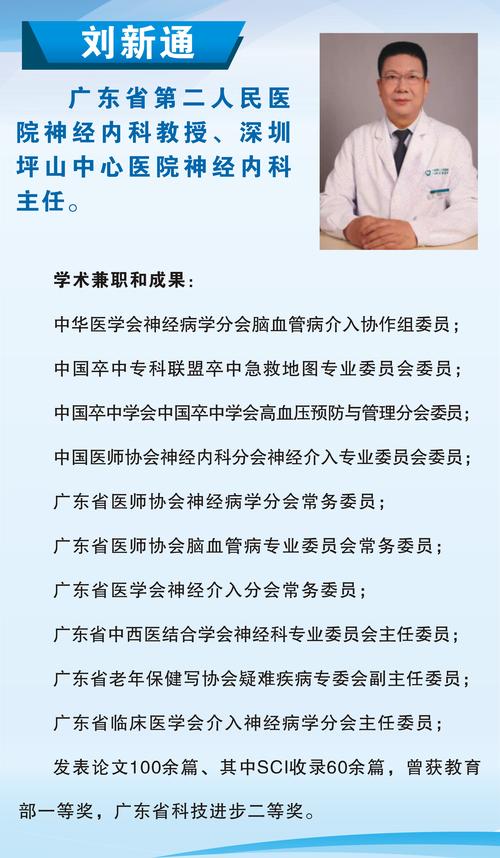一、岗位职责 1.在科室主任领导下,从事医疗相关岗位工作; 2.服从医院工作安排,积极完成和落实各项工作。 二、资格要求 1...
2025-08-13 74 广州市第一人民医院肾内科主任 广州市第一人民医院全国排名 广州市第一人民医院领导班子
为贯彻广东省“百万英才汇南粤行动计划”部署,落实市委、市政府关于人才强市的工作要求,根据事业单位公开招聘相关规定,按照“公开、平等、竞争、择优”的原则,广州市卫生健康委员会直属事业单位广州市第一人民医院面向社会公开招聘41名工作人员,现将有关事项公告如下:

一、单位简介
详见《广州市第一人民医院单位简介》(附件1)。

二、招聘岗位和要求
本次所招聘岗位均为事业单位编制岗位,招聘岗位及具体要求详见《广州市卫生健康委员会直属事业单位广州市第一人民医院2025年第一次公开招聘人员岗位需求表》(附件2)。应聘人员应认真对照招聘公告规定的报考条件和附件2中的招聘人员类型、专业、学历学位、年龄及其他资格条件等,不符合招聘公告和附件2要求的任何条件之一的,均不可以报名。招聘条件中所涉及的年龄、工作经历年限等时间点的计算截至报名首日。
(一)基本条件
1.具有中华人民共和国国籍;
2.遵守中华人民共和国宪法和法律;
3.拥护中国共产党领导和社会主义制度;
4.具有良好的政治素质和道德品行;
5.适应岗位要求的身体条件;
6.非广州市户籍人员应符合《广州市人民政府办公厅关于印发广州市引进人才入户管理办法的通知》(穗府办规[2020]10号)规定的广州市户口迁入条件;
7.港澳居民报考应符合《广东省人力资源和社会保障厅粤港澳大湾区(内地)事业单位公开招聘港澳居民管理办法》(粤人社规[2021]34号)和本公告规定;
8.招聘公告要求的其他条件;
9.法律、法规规定的其他条件。
(二)有下列情形之一的,不得报名
1.受过刑事处罚的;
2.被开除中国共产党党籍的;
3.被开除公职的;
4.被依法列为失信联合惩戒对象的;
5.尚未解除纪律处分或者正在接受纪律审查的;
6.因涉嫌违法违纪正在接受审计、纪律审查或监察调查,或者涉嫌犯罪,司法程序尚未终结的;
7.在各级机关事业单位招录(聘)中存在违纪违规行为被记入事业单位公开招聘应聘人员诚信档案库,且在记录期限内的;
8.聘用后即构成回避关系的;
9.现役军人、非2025年毕业的全日制在读生;
10.法律、法规规定的其他情况。
本条所规定的处分期限的计算截至报名截止日。
(三)报考年龄要求
具有岗位相关本科学历的年龄需在35周岁以下;具有岗位相关研究生学历或中级专业技术资格的年龄需在40周岁以下;具有岗位相关博士学位或副高级专业技术资格(非基层卫生序列)的年龄需在45周岁以下;具有岗位相关正高级专业技术资格(非基层卫生序列)的年龄需在50周岁以下。
(四)招聘人员类型
招聘人员类型:2025年毕业生、非2025年毕业的往届生、不限。
“2025年毕业生”是指2025年1月1日至2025年12月31日期间取得毕业证书的毕业生(含持国(境)外学历学位证书人员);
“非2025年毕业的往届生”是指2024年12月31日前取得毕业证书的非在读人员(含持国(境)外学历学位证书人员);
不限是指以上两类人员均可。
(五)其他说明
1.招聘专业代码按照《广东省2025年考试录用公务员专业参考目录》(附件3)中。应聘人员所学专业按所获毕业证书上的专业为准,毕业证书上的专业名称后面以括号等形式列出的培养方向不能作为报考专业的依据,学位种类不等同于报考专业。如应聘人员所学专业未列入专业目录(无专业代码),但所学专业主要课程与报考岗位要求专业的主要课程基本一致的,须在报名前提供毕业证、学位证以及毕业院校盖章的课程成绩单(海外学历还须提供正规机构出具的课程成绩单翻译件),经招聘单位认定为相近专业的方可报考。
2.招聘医师岗位的,根据相关文件落实住院医师规范化培训(以下简称“住培”)的“两个同等对待”政策:面向社会招收的住院医师如为普通高校应届毕业生的,其住培合格当年在医疗卫生机构就业,按当年应届毕业生同等对待;经住培合格的本科学历临床医师,按临床医学、口腔医学、中医专业学位硕士研究生同等对待。其中,应聘人员住培合格证书中的培训专业须与招聘岗位要求的专业方向一致。
3.专业技术资格要求:招聘岗位要求应聘人员具有专业技术资格的,应聘人员在报名时应已经取得对应的资格证书,且证书在有效期内。通过资格考试或评审、正在进行公示均不视为具有资格。
三、报名办法
(一)报名方式
应聘者在报名时间内,登录招考报名系统进行在线报名(网址:https://gzs1.zhaopin.com),并按网上提示填写个人信息,上传相关材料。
(二)报名时间
2025年6月12日9时至6月18日17时。
(三)报名要求
1.每位应聘人员只可报考一个岗位。
2.公开招聘各环节使用的身份证件必须一致。
3.报名需上传附件:
(1)有效期内的二代居民身份证(港澳居民使用港澳永久居民身份证),正反面合并在同页,报名与考试时使用的身份证必须一致。
(2)户口簿(首页+个人页)。
(3)毕业证、学位证(学历学位在国(境)外取得的,还需上传教育部认证材料)。暂未取得学历、学位证书的2025年毕业生上传毕业院校盖章的课程成绩单、就业推荐表代替(海外学历还须提供正规机构出具的对应翻译件)。
(4)报名岗位要求的专业技术资格证。
(5)大学英语六级成绩单(岗位要求具备的必须上传)。
(6)岗位要求完成住院医师规范化培训的,需上传住院医师规范化培训合格证书。对2025年完成住院医师规范化培训内容,但尚未取得合格证书的人员,可以上传培训单位开具的参加“住院医师规范化培训”相关材料报名,但需要在办理聘用手续前通过2025年的住院医师规范化培训结业考核,否则取消聘用资格。
(7)岗位要求有工作经历者须上传劳动(聘用)合同和社保缴费记录等相关材料;招聘岗位对工作经历年限有要求的,以与工作单位签订的正式合同及对应的社保缴费记录为准。在校生实习、创业经历不作为工作经历年限计算。对工作经历有指定性要求的,需提供该工作单位开具的从事该段指定工作经历的相关材料(加盖单位或人事部门公章)。2014年10月前机关事业单位的在编工作经历可不提供社保缴费记录(可由原单位出具相关材料)。
(8)报名岗位要求的其他相关材料、证件。
以上相关材料均要求原件彩色清晰扫描件上传,报名系统上要求上传的个人照片为个人彩色免冠证件照。
4.凡与招聘单位在职在编人员有夫妻关系、直系血亲关系、三代以内旁系血亲关系、近姻亲关系或者其他亲属关系的应聘人员须在报名登记表的“家庭主要成员及重要社会关系”栏中逐一填写清楚,不得漏填。
5.应聘人员在报名系统填报的所有信息均将留存,在资格复审、聘用考察、公示、聘用后试用期间与真实信息进行对照,如发现应聘人员有弄虚作假的行为,报名信息与真实情况不符的则取消其面试、体检和聘用资格,已经聘用的予以解聘。
(四)资格初审
报名开始后,由招聘单位对应聘人员的报名资格进行初步审核,应聘人员可登录系统查询初步审核结果。通过初步审核的,不能再报考其他职位。报考申请被退回修改的,可以在系统反馈的规定时间前补充或修改报名材料,但不允许修改报考岗位,未按要求补充或修改的,视为放弃报名。
符合岗位报考条件要求的进入招聘考试程序,提供材料信息不实、不全或不符合招聘条件的资格初审不合格,报考人员需对系统内填写信息的准确性、真实性负责。初步审核结果以系统反馈为准,不另行通知,请应聘人员密切关注审核动态。
(五)报名确认
报名确认时间另行通知,报考人员需登录报名系统确认是否参加考试,未在规定时间内按要求完成考试确认的,视为放弃考试资格。完成考试网上确认的考生方能参加笔试以及本次招聘后续的各项环节。
(六)准考证打印
准考证打印时间另行通知,完成资格初审和报名确认的报考人员请登录原报名网站下载打印准考证。准考证是参加本次公开招聘的重要证件,考生参加资格审查、考试、体检等各环节时,必须同时携带准考证、身份证件,证件不齐的,不得参加考试。
四、考试方式和内容
考试采取笔试和面试方式进行,总成绩为百分制,四舍五入保留小数点后2位,总成绩70分及以上为合格。笔试和面试成绩分别占总成绩的40%和60%。免笔试人员,面试成绩为总成绩。
考试内容为招聘岗位所需的专业知识、业务能力、工作技能、语言表达能力、应变能力、沟通协作精神、心理素质、仪表气质等。
(一)笔试
1.笔试时间和地点:笔试时间及地点以准考证上为准。
2.笔试采用闭卷独立完成方式,主要测试应聘人员的基本素质和从事应聘岗位的工作能力。笔试成绩采取百分制,四舍五入保留小数点后2位,笔试成绩60分及以上为合格,笔试成绩合格者方可按比例进入下一环节。
3.为确保招聘工作的竞争性和公正性,笔试开考比例原则上不低于1:3(含1:3)。达不到开考比例的,取消该招聘岗位或相应调减该岗位的招聘人数。
4.部分紧缺专业岗位未达到开考比例的,在同一招聘岗位相同报考条件下,经批准同意笔试开考比例调整为按1:2设定,延长报名时间(具体内容另行公告)仍达不到1:2开考比例的,按实际符合报名人数开考。
5.招聘具有博士学位或高级专业技术资格者(非基层卫生系列)的岗位免笔试,免笔试岗位的应聘人员经审核合格后,不受开考比例限制,按实际人数进入资格复审,资格复审通过后进入面试环节,面试成绩即为总成绩。
6.笔试成绩将在笔试结束后20个工作日内通过报名系统公布,考生自行登录原报名网站查询本人笔试成绩。
(二)资格复审
在笔试合格的应聘人员中,根据笔试成绩由高到低的顺序,按岗位拟招聘人数1:5的比例确定入围面试人员名单,最后一名多人成绩相同的,可同时列为入围面试人员。笔试合格人数未达到上述比例的,将全部笔试合格人员确定为入围面试人员。通过资格初审的免笔试人员直接入围面试。
入围面试人员名单将在广州市卫生健康委员会门户网站公布。
在面试前将对入围面试人员进行资格复审。入围面试人员未按规定时间参加资格复审和面试的,视为自动放弃。对不符合招聘条件的,取消其面试资格,并书面告知相关事由。入围面试人员因不符合招聘条件被取消面试资格的,招聘单位及其主管部门在同一岗位笔试合格的应聘人员中,根据笔试成绩由高到低的顺序依次递补。资格审查贯穿公开招聘全过程。
资格复审具体时间、地点、所需提供资料将另行通知。
(三)面试
1.面试时间和地点:另行通知。
2.面试人选:通过资格复审的人员。
3.面试形式:采用结构化面试。
4.面试成绩采取百分制,四舍五入保留小数点后2位,面试成绩70分及以上为合格,面试成绩合格者方可进入下一环节。未有面试合格人选的招聘岗位,取消该岗位的招聘。
5.面试成绩在候分室向考生公布,并由考生签名确认。
6.总成绩低于70分者,不得进入下一环节。如同一岗位应聘人员总成绩相同的,按照面试成绩高低顺序确定名次;如面试成绩仍然相同的,则按结构化面试主评委评分高低顺序确定名次;如主评委评分仍然相同的,由招聘单位组织总成绩相同人员重新进行面试,并按此次面试成绩的高低顺序确定参加体检人员。
五、体检和考察
在总成绩合格的应聘人员中,按总成绩由高到低的顺序确定与招聘岗位数量等额的体检人员,并按规定组织体检。体检标准、工作要求和程序、工作纪律执行广东省有关规定。参加体检人员须在规定时间到广州地区指定医院进行体检,具体时间、地点由招聘单位确定并另行通知。
根据体检结果确定考察人选,并按相关规定进行考察,考察合格人员方可进入下一环节。
六、公示
对体检、考察合格的拟聘用人员,拟聘名单在广州市人力资源和社会保障局和广州市卫生健康委员会门户网站上公示5个工作日。公示期满无异议的或异议不影响聘用的,按有关规定办理聘用手续。
七、递补
因下列情形导致拟聘岗位空缺的,招聘单位可在7个工作日内,从同一岗位总成绩合格人员中按总成绩从高到低顺序依次递补,并按照有关体检、考察、公示等规定办理,是否递补由招聘单位决定。
(一)应聘人员体检不合格的;
(二)考察人选未被确定为拟聘用人员的;
(三)拟聘人员公示结果导致不能聘用的;
(四)拟聘用人员放弃聘用的。
八、聘用及待遇
(一)由用人事业单位与批准聘用人员签订聘用合同,按照规定实行试用期制度。试用期包括在聘用合同期限内。试用期满不合格的,取消聘用。
(二)获聘用人员为事业单位编内人员,工资待遇执行广州市事业单位工资政策。
九、注意事项
(一)应聘人员须恪守诚信原则,诚信报考。在报名前需认真阅读公告、岗位要求,符合条件要求方可参加招聘。考生须对所提供的各项信息、材料的真实性、准确性和有效性负责,凡填写虚假信息或提供虚假材料的,一经发现即取消考试或聘用资格。对恶意干扰报名的人员,将依据有关规定进行处理。涉嫌犯罪的,移送相关部门处理。
(二)考生资格审查贯穿招聘工作全过程,在各环节发现报考者弄虚作假或不符合资格条件的,招聘单位均可以取消其资格。
(三)2025年毕业生如未在2025年12月31日前获得岗位招聘条件中与专业要求相对应的学历或学位证书(国(境)外高校毕业生还需提供2025年1月1日至2025年12月31日期间取得的中国(教育部)留学服务中心境外学历、学位认证函),将被取消聘用资格。
应聘有住培要求的岗位如未在2025年12月31日前获得岗位招聘条件所要求的住培合格证书,则将被取消聘用资格。
(四)拟聘人员应在规定时间内报到,未在规定时间内报到的视为自动放弃聘用资格。
(五)准考证是应聘人员参加考试、体检等各环节的重要证件,请妥善保管。报考人员参加考试、体检时,必须同时携带准考证和身份证;证件不齐者,不得参加。
(六)聘用后必须服从聘用单位的岗位和聘任安排,按事业单位人事管理的有关规定开展岗位聘用。具备中、高级专业技术资格的报考人员,如聘用后聘用单位暂时不能安排相应中、高级岗位的,待单位出现中、高级岗位空缺后,通过竞聘上岗方可享受相应的专业技术资格待遇。此类人员一经报名,视为接受上述条件。
(七)为便于管理,非广州市户籍考生原则上应在录用后将户籍迁至广州市。
(八)本次招聘不收取任何报考费用,不指定考试教材,不举办、也不委托任何机构举办考试辅导培训班。社会上任何以本次公开招聘考试命题组、专门培训机构等名义举办的辅导班、“保过班”、“协议班”、辅导网站或发行的出版物、参考资料、上网卡等,均与本次招聘无关。
(九)本次招聘中如有涉嫌违纪违规行为的,严格按照《事业单位公开招聘违纪违规行为处理规定》(人社部令第35号)追究责任。
(十)根据《事业单位人事管理回避规定》(人社部规[2019]1号)落实相关回避规定要求。
公告由广州市卫生健康委员会负责解释,咨询电话:020-81097061、020-22903809,举报(投诉)或监督电话:020-81048110、020-87302871。
广州市卫生健康委员会
2025年6月6日
附件:
1.广州市第一人民医院简介.docx
2.广州市卫生健康委员会直属事业单位广州市第一人民医院2025年第一次公开招聘岗位需求表.xls
3.广东省2025年考试录用公务员专业参考目录.xls
信息来源于网络,如有变更请以原发布者为准。
来源链接:
http://wjw.gz.gov.cn/xxgk/rsxx/content/post_10300295.html
标签: 广州市第一人民医院 广州市第一人民医院肾内科主任 广州市第一人民医院领导班子
相关文章

一、岗位职责 1.在科室主任领导下,从事医疗相关岗位工作; 2.服从医院工作安排,积极完成和落实各项工作。 二、资格要求 1...
2025-08-13 74 广州市第一人民医院肾内科主任 广州市第一人民医院全国排名 广州市第一人民医院领导班子

历史悠久 始建于 1899 年(光绪25年),至今126年历史。 实力雄厚 医院连续多年入选“中国医院竞争力?医院排名 100 强榜单”,并在“中...
2025-08-13 65 广州市第一人民医院是三甲吗 广州市第一人民医院肾内科主任 广州市第一人民医院鹤洞分院

历史悠久 始建于 1899 年(光绪25年),至今126年历史。˂div style="color:#999;text-align:ce...
2025-08-08 111 广州市第一人民医院是三甲吗 广州市第一人民医院血液科 广州市第一人民医院领导班子

历史悠久 始建于 1899 年(光绪25年),至今126年历史。 实力雄厚 医院连续多年入选“中国医院竞争力?医院排名 100 强榜单”,并在“中国医...
2025-08-08 65 广州市第一人民医院肾内科主任 广州市第一人民医院鹤洞分院 广州市第一人民医院全国排名
发表评论